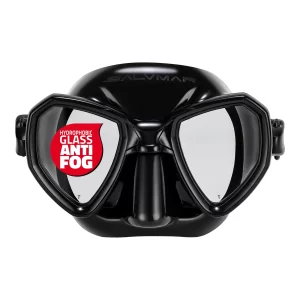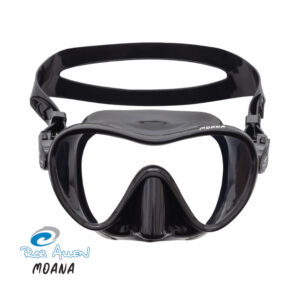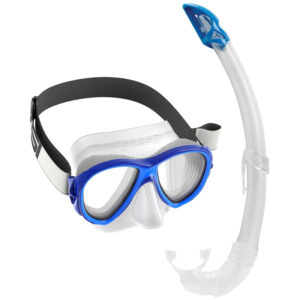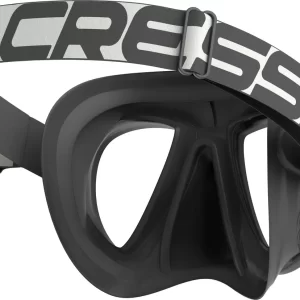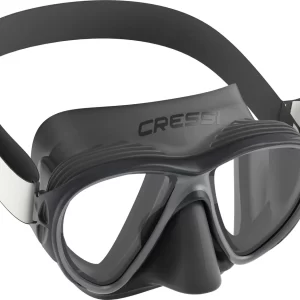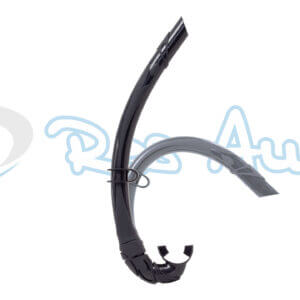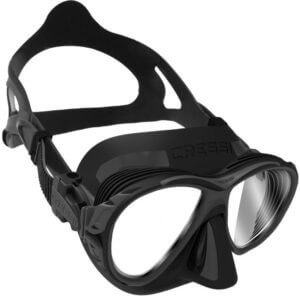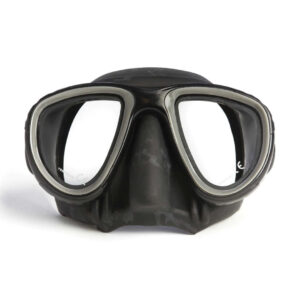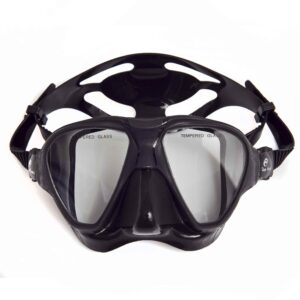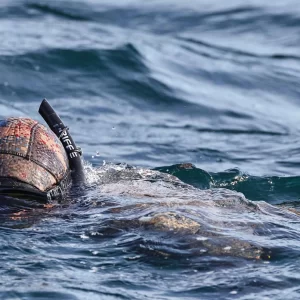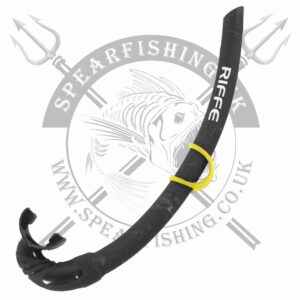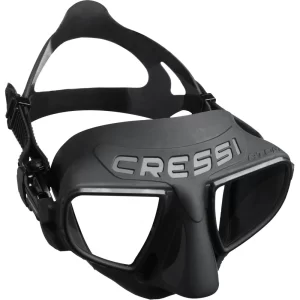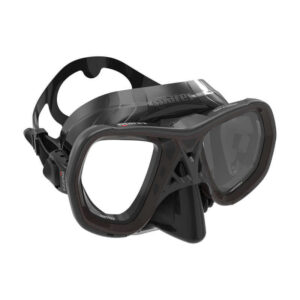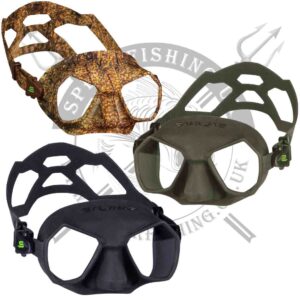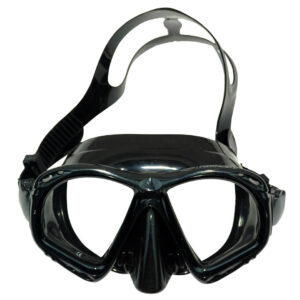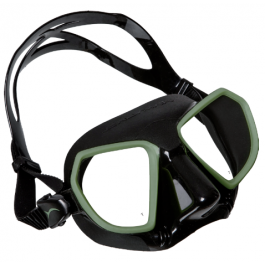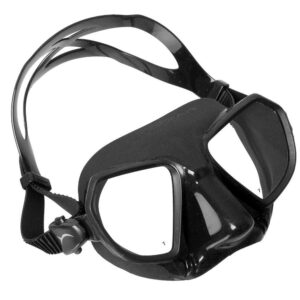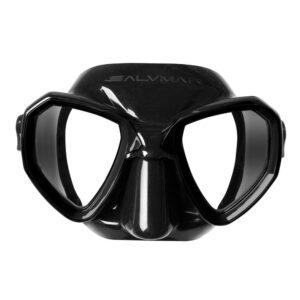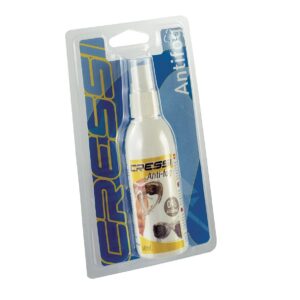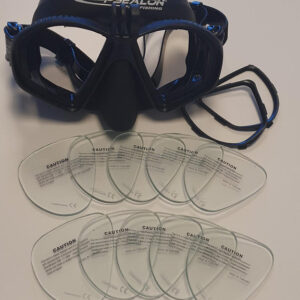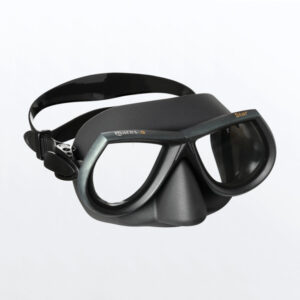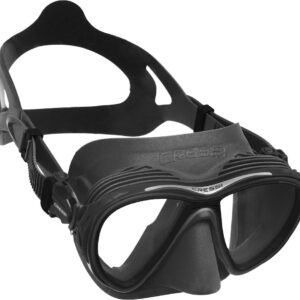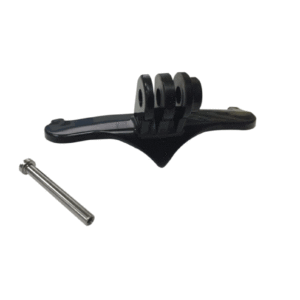Spearfishing Masks
Spearfishing masks are typically different to scuba masks in the sense that they are ‘low volume’. Low volume is a term you will hear often and refers to the amount of empty space in the actual mask cavity once worn.
This is important to freedivers and spearos because the deeper you dive the more the mask compresses against your face due to the ever increasing water pressure. Eventually it starts to painfully suck on your eyeballs and you have to ‘equalise your mask’ to return it to a comfortable state. Scroll down to read the rest of our spearfishing masks guide.
Check out our Mask & Snorkel buyers guide here

Showing 1–48 of 97 resultsSorted by latest
These masks are typically different to scuba masks in the sense that they are ‘low volume’. Low volume is a term you will hear all the time and refers to the amount of empty space in the actual mask cavity once worn.
This is important to freedivers and spearos because the deeper you dive the more the mask compresses against your face due to the ever increasing water pressure. Eventually it starts to painfully suck on your eyeballs and you have to ‘equalise your mask’ to return it to a comfortable state.
Equalising your mask simply involves blowing air into it through your nose to take that pressure off.
Low volume spearfishing masks are better for lung divers (not scuba) because it requires less air from your lungs to equalise it. If it was a normal high volume mask then you would need to use more of your valuable lung air to equalise it meaning less oxygen for your body.
Obviously while diving your oxygen supplies are your most valuable commodity so you want to do everything possible to keep it safe. Blowing endless into a big mask is the last thing you want to be doing! Top professional free divers use swimming pool style googles for this very reason.
Remember, on the way back up you can start to slow inhale that mask air back into your lungs, a nice little treat when your oxygen deprived 🙂
Split lens mask verses single lens masks
If you check the masks above you will see these two low volume variations.
Split lens dive mask:
These are very slightly angled allowing for superior peripheral vision. For this reason they idea for reef hunting where everything is going on around you and you want as much information as possible, from all angles.
Single lens dive mask:
These are designed for blue water hunting in the open ocean where you often target fish from a greater distance, home in and then take your shot. The benefit of the single lens is it aids your depth perception which can be a real headache in the open ocean.
The problem is that many fish grow in exactly the same proportions throughout their life span. With nothing in the back ground to give you perspective the mind can play tricks on you. Is it a small fish up close or a big fish far away? Obviously if you have plenty of time to target your fish this isn’t much of an issue but for those action situations where everything’s happening in the blink of any eye, it can really mess with you.
The single lens masks above are designed to help you all it can and minimise these situations by give your better forward facing, predator style vision.
Fitting your mask:
It’s always beneficial to try masks on before you buy. If you can’t make it to a shop then consider ordering a couple with the view of only keeping one.
The easiest technique is to ignore the head strap and place it in position on your face. Now breathe in through your nose and feel if you have a air tight seal or if you have leaking air coming in. The more air tight the better.
Some people can wear every mask in existence while others struggle to find ‘the one’. If you’re in the ‘the one’ club then when you do finally find your dream mask, consider buying a few of them before the manufacturer changes the design!
The Rob Allen masks above are the masks that we find fit the most different face shapes and is a good starting point – at the time of writing we have only ever had two sent back to us.
If you’re rocking a big beard then we firstly salute you and encourage you to keep on growing brother. If you have issues with water leaking in through the moustache zones then try rubbing on a bit of Vaseline, we find this works a treat. Alternatively try to shave a couple of millimetres off below the nose.
Remember when wearing your mask that the back strap splits into two sections for a reason. Not many people realise that the crown of your head needs to be in the middle of these straps with one above and one below. This will keep your mask in its optimal position which it was designed for. It will keep it comfortable and snug against the face.
When you first buy your mask…
It’s important to clean it before use otherwise it will fog up all day long. The reason is that all masks, no matter where it’s purchased from, will have an invisible layer of film on both sides which was left over from the manufacturing process. If you don’t remove it then it will 100% fog up on you.
Some people burn it off with a lighter however we feel the best way is to use toothpaste. Squirt a small amount on both sides of the lens and simply rub it with your finger until you get that ‘squeaky clean’ noise. Then just rinse it all off and you’re ready to go. Remember to do both the inside and outside. Toothpaste works so well because it has a very fine grit to it which lightly agitates off any residue.
You can use this same technique to clean it between dive sessions.
To avoid fogging when diving remember to spit in it and lightly rinse it off with sea water, this works a treat and should be all you need to keep it fog free. Cleaning in fresh water every couple of dives is also recommended to both prolong the masks life and stop it from fogging.

